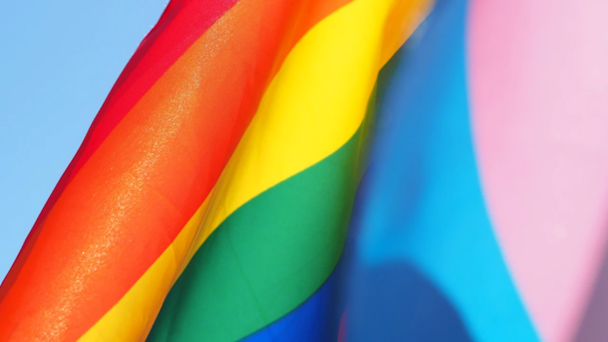Going beyond the rainbow: can brands be true allies to the LGBT+ community online?
The Drum’s social media executive Amy Houston explores if brands can truly be LGBT+ allies, if social networks are doing enough to protect the community against harassment and hate speech, and why rainbow-washing is extremely harmful.

Can brands be true allies to the LGBT+ community, or is it all rainbow-washing?
The rainbow flag was first designed in 1978 by American artist and gay rights activist Gilbert Baker, and forty years later it is still proudly flown by the LGBT+ community and allies as a symbol of identity and support. The colorful hues are instantly recognizable worldwide and synonymous with Pride celebrations, and with this year’s festivities now in full swing, social media feeds are awash with rainbow-colored logos. This is a welcomed gesture, but what does it really achieve?
More so than ever social media users are participating in civic-related discussions online that engage a whole smorgasbord of people in important conversations. But as with any step forward there will always be some hurdles to overcome, and this is where ‘performative activism’ enters the chat.
‘Rainbow-washing’ is a term that is frequently used online during Pride month to describe a person or organization who has used LGBT+ related issues in positive ways to distract attention from the potentially negative actions of their company. Basically, they slap a rainbow on something and carry on as normal. Simply changing a logo allows brands, governments and people alike to appear to support the LGBT+ community without necessarily doing any tangible work, which potentially does more harm than good. It begs the question: can brands truly be LGBT+ allies?
It’s good to take stock of what makes an effective ally to begin with, and in my opinion that is amplifying voices before your own, collaborating with or donating to charities, and ultimately educating yourself. Speaking with Margo Kahnrose, chief marketing officer at Skai, she echoes these sentiments by noting that social media is “the perfect medium for educational storytelling, which can make the cause far more impactful in driving awareness than a rainbow-washed logo or themed products”. She highlights H&M’s ‘Beyond the Rainbow’ campaign on Instagram in which the retailer has used its huge social reach to amplify influencers’ voices in the LGBT+ community, encouraging them to share their own personal experiences. H&M USA is also supporting The Trevor Project, a suicide prevention and crisis intervention organization for LGBT+ people, and will be donating funds, which hopefully is something the retail giant will continue to do past the month of June.
When brands participate in a socio-related movement online it can help people within that community feel recognized and accepted, but the work truly has to start from inside the organization. Going beyond the rainbow is something that We Are Social’s global head of research and insight Paul Greenwood tells me is extremely important: “They (brands) should look to better represent LGBT+ communities in their advertising, and back this up with internal policies that foster a more inclusive environment in their workplaces.”
Being an ally to the LGBT+ community is so much more than raising the rainbow flag online, and solidarity can be shown in many ways. I spoke to Ikea’s head of equality, diversity and inclusion Peter List about what the Swedish brand is doing to support its community and staff. List says, at its core, the retailer promotes “customer and co-worker engagement initiatives that aim to not only show support but also educate and start conversations”. Brands need to be allies in a way that feels progressive and pushes the cause further. “We want people of all sexual orientations and gender identities to feel at home, not just at Ikea but everywhere,” he notes.
The heart and soul of social media lies in storytelling and connection, so using it to celebrate people’s journeys is powerful. But what are the social networks doing to protect these communities against hate speech online? LinkedIn and Facebook have both added colors to their logos to show support of Pride month, but according to a recent report from Glaad the social media landscape is ‘effectively unsafe’ for LGBT+ people due the prevalence and intensity of hate speech and harassment. The report also states that 75% of this harassment occurred on Facebook.
To get a clearer understanding of the scale of this issue and the steps that social media networks need to take, I speak with Rich Ferraro, Glaad’s chief communications officer. He says: “During the 2020 election, platforms showed they have capabilities and strategies to combat hate and thwart the threat of misinformation, as well as the resources to further develop these tactics for the unique needs of LGBT+ users, but they are slow and hesitant to act.”
Social media networks need to share the powerful LGBT+ original content and campaigns “not just with LGBT+ users, but with non-LGBT+ audiences,” he notes. Using an educational and re-targeting approach would be beneficial so that “when users are searching for anti-LGBT+ content, platforms can suggest PSAs or other factual resources, instead of sending users down a rabbit hole of hate and misinformation,” Ferraro concludes.
Social media moves quickly and the OG platforms need to work fast to keep up. I spoke with TikTok Europe’s head of creator solutions Julien Wettstein about Pride 2021.“This year, our campaign is all about helping people have the freedom to be themselves in any and all spaces,” he tells me. “To make that happen, we’re partnering with LGBT+ trailblazers and creators to educate people on our platform, donating to organizations advancing LGBT+ causes including Stonewall, and, importantly, making changes to our platform to create a welcoming environment for everyone.”
Earlier this week anonymous social media beauty collective Estee Laundry called out brands like Mac Cosmetics, Origins, Urban Decay and L’Oréal for being quite market-specific in their placement of the rainbow logo. Notably Mac Cosmetics Russia has not changed its logo on Instagram, yet the parent account Mac Cosmetics has. Is this an example of rainbow-washing and using LGBT+ rights to push profits? I put the question to Jellyfish Social’s creative lead Kate Cliffen. “This is a complicated issue because in places like Russia, LGBT+ members of staff could be put in direct danger because of this.” She goes on to say that “if a brand as large as Mac is going to position themselves as an LGBT+-friendly company, then they need to be able to support the team and push for a global message of support and acceptance”. Leaning into the notion that brands need to be all in or go home, she adds: “If anything, it feels more important for Mac Cosmetics Russia to change their logo in an area where people may not feel as safe and accepted, and it could really make a difference in the fight for collective liberation.”
Pride is a celebration of love and community, and for me, seeing rainbow hues online is uplifting and shows how far the movement has come. Brands, organizations, people and governments that profess to support the LGBT+ community in June need to continue the real work all year long and work towards making the online space a safe, fun and harassment-free environment for everyone.
I asked The Drum’s social media community for their thoughts, and here’s what they had to say:
It's a great way to show support but it's not the only way. From increasing LGBTQ+ representation in their ads to donating to LGBTQ+ charities, brands can empower the community with REAL impact
— My.Good-Loop (@MyGood_Loop) June 10, 2021
If they can back the rainbow with demonstrated and substantive impact for the LGBTQIA+ community, I'm all for it. Otherwise, it's practically exploitive. #Pride pic.twitter.com/cvERGm5Jt8
— jason (he/him) (@jasonsyptak) June 9, 2021
Diversity is the true essence of humanity
— Mu' (@Mu37434457) June 10, 2021

